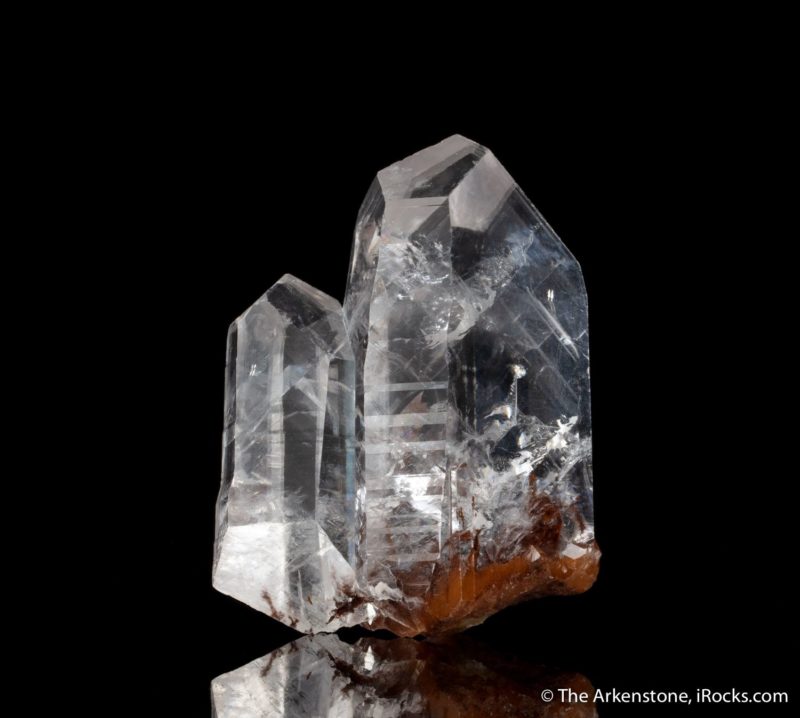What's this Rock?
Curious about identifying your minerals and crystals? This can be a tricky process, sometimes requiring a good bit of testing and equipment, which is why we don’t make guesses off of photos and videos submitted online! We’d rather be conservative in the spirit of proper science than make bad guesses off of limited information, like images online.
I bet a lot of us have had situations where we go on a hike and find a cool rock, or we’re given a gift but we have no clue what the rock or mineral is. A large percent of the time, these rocks can’t (and shouldn’t!) be identified by just photo or video, since digital media generally can’t accurately portray all of the physical properties required to make a good guess, much less a positive identification. It can be a bit like trying to guess the color, make, and model of a car, when only looking at a black outline of the car’s shape. You have some clues, but a definite ID is pretty tough unless the outline has distinctive features!
This calcite, for example, stumped many of our friends on social media (so much so that we did a scientific analysis to prove the ID!)
Due to the clarity and colorless nature, many people argued that it was a quartz, instead of a calcite from China, and we completely understood how an initial first impression could be confusing. However, when examining the crystal in person, various physical attributes of the cluster can help with clarifying the identification, such as hardness (calcite is only a 3, while quartz is a 7 on the Mohs scale) and the strong doubling characteristic of calcite. Calcite also will bubble slightly with a drop of vinegar, while quartz won’t. So even though this crystal might look like quartz off a quick photo or video, a true ID requires more information than online media can provide.
Often times, photos and videos of rock samples don’t show necessary identification characteristics like defined crystal shapes or formations, or there is an absence of indicative features and colors. Or perhaps the unknown mineral is embedded in host rock, and it can’t be identified from the smattering on the surface. Most often, the devil is in the detail.
Density, luster, and hardness are all meaningful identifiers that also can’t be determined just from photos and videos, and these can be vital clues to make identifications.
Photos and videos also make it difficult or sometimes impossible to determine if minerals have undergone treatments like dying or heating. These determinations often require more advanced equipment and experimenting. A great example of this is a famous find of bright blue hemimorphite from Mexico that came to market in 2020. The world went crazy for them, with many initially selling at really high prices, but once dealers and clients began seeing them in person, skeptics started doubted the legitimacy of the color. Testing performed by FMI and Dr. John Rakovan determined the crystals were coated by Phthalocyanine Blue B and sold illegitimately.
So, now for the reality check. How do you confirm the identity of your mineral or rock specimen?
Many identifications are simply good educated guesses unless actual scientific analysis is done on a piece, such as X-ray diffraction (XRD) or Raman spectroscopy. Try reaching out to nearby universities with geology departments, since they might be able to assist, or do a little Googling to find companies that perform testing services for a fee.
Check with local rock shops or mineral and gem clubs, as well, since you might be able to show specimens to someone in person to help them guide you in your identification efforts.
Mineral museums can be a very good resource as well. Some of them offer help with mineral identification, either by walk-in or by scheduled hours. Find out and take advantage.
If you still want some suggestions and tips from people who are willing to speculate off photos and videos, or help with some guidance, here are a few other resources.
Please note that many of these resources require some basic descriptive information in addition to photos and videos, and the more information you can provide, the better your answers are likely to be! Information like where you found the specimen and how long you’ve had it can be great clues for these sleuths.
Mineral Specimen Identification Room on Facebook – There are also other Facebook groups to explore for identification help, too, if you do a little searching, though we’ve found this is one of the better moderated groups for mineral identification.
